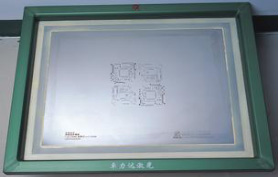
Surface-mount technology (SMT) is a method of producing PCBs where the components are mounted or placed directly onto the surface of the board.
“The stencil is designed to allow a smooth transfer of material (solder paste) onto the bare PCB. It is crucial in ensuring that the material is placed with precision. It is also vital in ensuring that deposits are formed with the proper shape and size. The stencil is critical to ensure that the assembly process can be operated with a high-yield output.”
“The stencil provides a tool for accurate solder paste deposition, allowing the process to be repeated multiple times. The solder paste is printed through the holes in the stencil, forming deposits that hold the components in place. The stencil provides the accuracy needed to ensure the solder is printed in precisely the right place on the PCB.”
“The way in which the stencil is designed can be varied based on thickness, the size of the aperture, and the shape of the aperture.”
How are stencils formed?
There are various technologies for forming stencils
1.Laser
2.Electroformed
3.Chemically etched plastic
4.Hybrid – a combination of chemically etched and laser-cut.
In chemically etched stencils, the stencil is etched from both sides using two positive images. The etching process leaves aperture walls that taper to an hour-glass shape in the centre of the aperture. In laser-cut stencils, a stainless steel foil is cut by laser, creating an opening for each component that will be included in the final PCB. For both processes, aperture walls are electro-polished to ensure a smooth finish. Following the cutting process, the stencil is aligned over the board. The solder paste is deposited over the apertures. After the solder is laid, the foil is removed.
Ensuring the correct amount of solder paste.It is vital to ensure that the amount of solder being laid down meets design specifications. If not enough solder is used, there is a risk of inadequate solder joints. In contrast, much solder can result in balling, bridging and tomb-stoning. Both options can disrupt the electrical functionality.